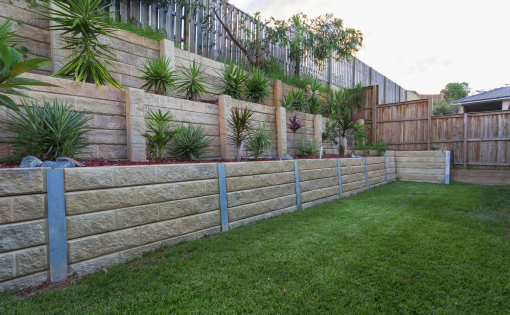
When Does Your Retaining Wall Need a Drainage Solution?
Retaining walls hold soil back to shape the ground to fit your outdoor designs. The soil within the wall absorbs water from rainfall and groundwater, among other sources. If you do not drain the water in the soil behind the wall, the wall could crack or break. A drainage system is necessary for retaining walls under the following circumstances:
- The wall is four feet high or taller: Walls four feet or taller can cause significant damage if they fail, so it’s best to install drainage behind a retaining wall of this height or taller.
- The soil consists of or contains clay: Clay does not drain well and becomes extremely weak when wet. A drainage system removes water from the clay soil behind your wall to ensure it stays in place.
- The wall is built with concrete or cinder blocks: These materials do not have any natural joints that allow water to flow through them. A drainage system prevents water from building up and causing the soil to burst through the concrete or cinder block retaining wall.
- The wall is at or near the bottom of a hill: Water naturally flows and drains downhill through the soil. If a retaining wall sits at or near the bottom of a hill, that water will pool there. A drainage system removes the water that flows downhill, so it does not affect the soil’s or wall’s placement.
- The wall is located near water sources: These sources include groundwater; surface water, such as water from nearby downspouts; and buried water sources, including water mains and irrigation lines. A drainage system can remove water from these sources, so the soil behind the wall drains properly.
- The retaining wall is terraced or tiered: Sometimes, retaining walls can create tiered or terraced spaces for plants, steps, or other installations. In these cases, drainage systems keep water from flowing from the higher terrace or tier to the lower one.
How Does Perforated Pipe Drain Water Away From Retaining Walls?
Perforated pipe systems have slots on each pipe that allow the water to drain from the soil into the pipe. Then the water flows through the pipe to an outlet in or near the wall. Once the water reaches the pipe outlet, it flows away from the wall. Pipe outlets can emerge from the wall’s face or space underneath the wall. Overall, the pipe connects to outlets that carry the water away from the soil behind the wall as safely as possible.
How Does Hydraway Drain Water More Effectively Than Traditional Perforated Pipe?
Hydraway is more effective in outdoor drainage installations because it is simpler to transport and install. It also allows water to flow over 70% of the soil’s drainage surface, so it passes through the soil and flows away from it more quickly than it would in a traditional perforated pipe system. Instead of having large perforated pipes with slots on the sides, our system uses an 85% open core that is thermally bonded to a filter fabric that prevents clogging. Hydraway ultimately drains more water than traditional perforated pipe systems do.
Contact Us
Please complete the form below for more information on our solutions or to learn about our distributor’s program.

